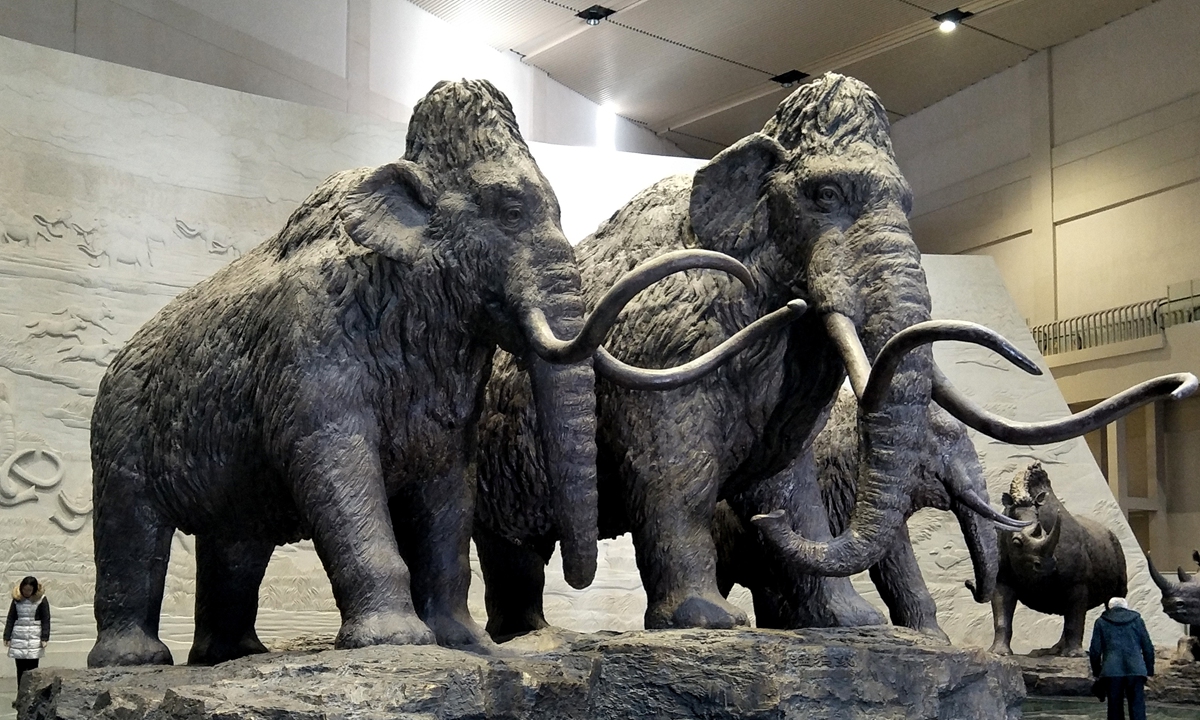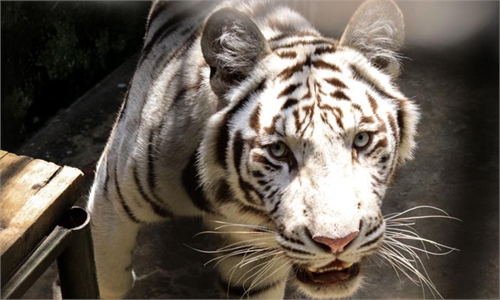ARTS / CULTURE & LEISURE
International collaborative research reveals the life of Mammuthus-Coelodonta Faunal Complex in Northeast Asia

Sculptures of woolly mammoth belongs to the Mammuthus-Coelodonta Faunal Complex displays at an exhibition in Daqing, Northeast China's Heilongjiang Province in 2019. Photo: IC
Jointly launched by researchers from countries such as China, Germany and Russia, a new scientific project has been published, setting a milestone for the investigation of the Mammuthus-Coelodonta Faunal Complex in the particular Northeast Asia region, revealing the living conditions of this ancient species to readers worldwide.
Mammuthus-Coelodonta Faunal Complex refers to herbivores such as the woolly mammoth (Mammuthus primigenius), woolly rhinoceros (Coelodonta antiquitatis), and steppe bison (Bison priscus). According to the head researcher of the project, Ma Jiao, explained in the research paper, nearly half of the fauna went extinct at the end of the Pleistocene.
While acknowledging that the paleoecology of the Mammuthus-Coelodonta Faunal Complex in Palearctic had already been widely explored, the project focuses on the research gap of the insufficient scientific attention given to the species in the area of Northeast Asia.
Paleoanthropologists undertook various methods such as radiocarbon dating, Zooarchaeology by Mass Spectrometry (ZooMS), and stable isotope analysis of fossil faunas to study the Mammuthus-Coelodonta Faunal Complex in two major sites of the middle-latitude region- the Paleolithic site in Harbin, Northeast China's Heilongjiang Province and the Geographical Society Cave in close to Far East Russia.
Major findings according to data gathered from the two sites suggest the food preferences of the three herbivores, which the woolly mammoth was particularly interested in grass and sedges, while the woolly rhinoceros and steppe bison seem to be 'less picky eater,' who were lived off a wider range of food resources.
Along with the discovery of fauna's food resources, another surprising finding in the research was that it reported solid evidence of Bubalus based on methods of Zooarchaeology by Mass Spectrometry, and accurately identified a sample of Wang Shi Bubalus of Yanjiagang. The finding gives evidence that dates back much earlier than those published about the Yangjiagang site in the 1980s.
As an internationally collaborative project, the research was conducted by a scholarly team including professional investigators from China's scientific and educational institutions such as the Institute of Vertebrate Paleontology and Paleoanthropology (IVPP) and Fudan University, and also the University of Tübingen in Germany, alongside others.
Named 'The Mammuthus-Coelodonta Faunal Complex at its southeastern limit: A biogeochemical paleoecology investigation in Northeast Asia,' the study has recently been published online in the academic journal Quaternary International, where the two researchers Ma Jiao and Wang Yuan from IVPP are credited as first and second authors of the research paper.



